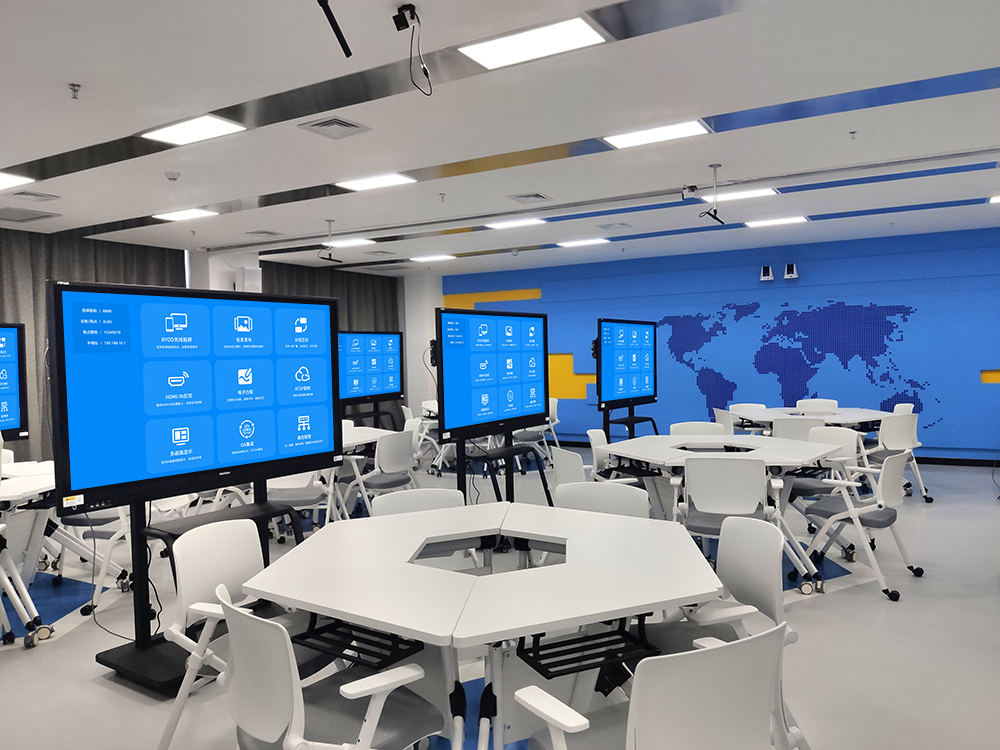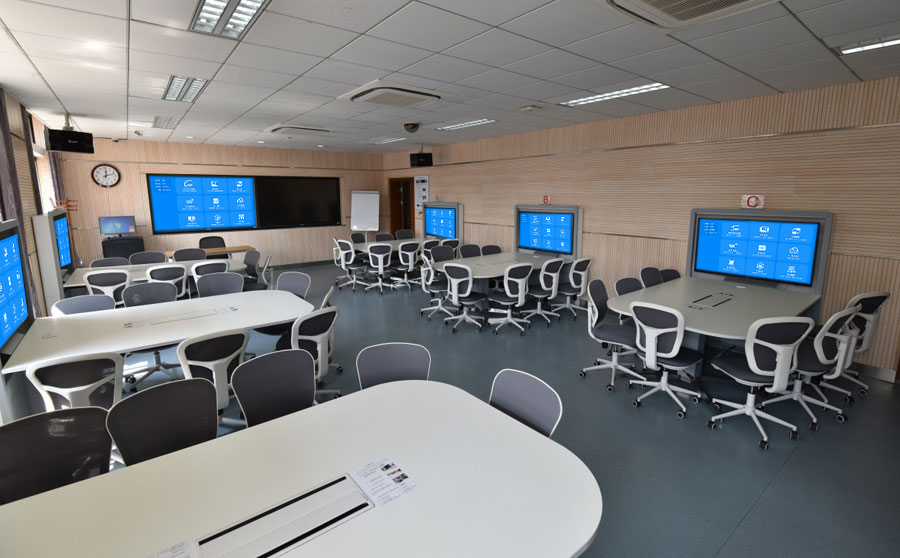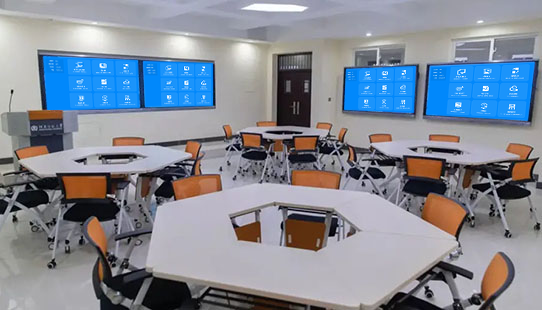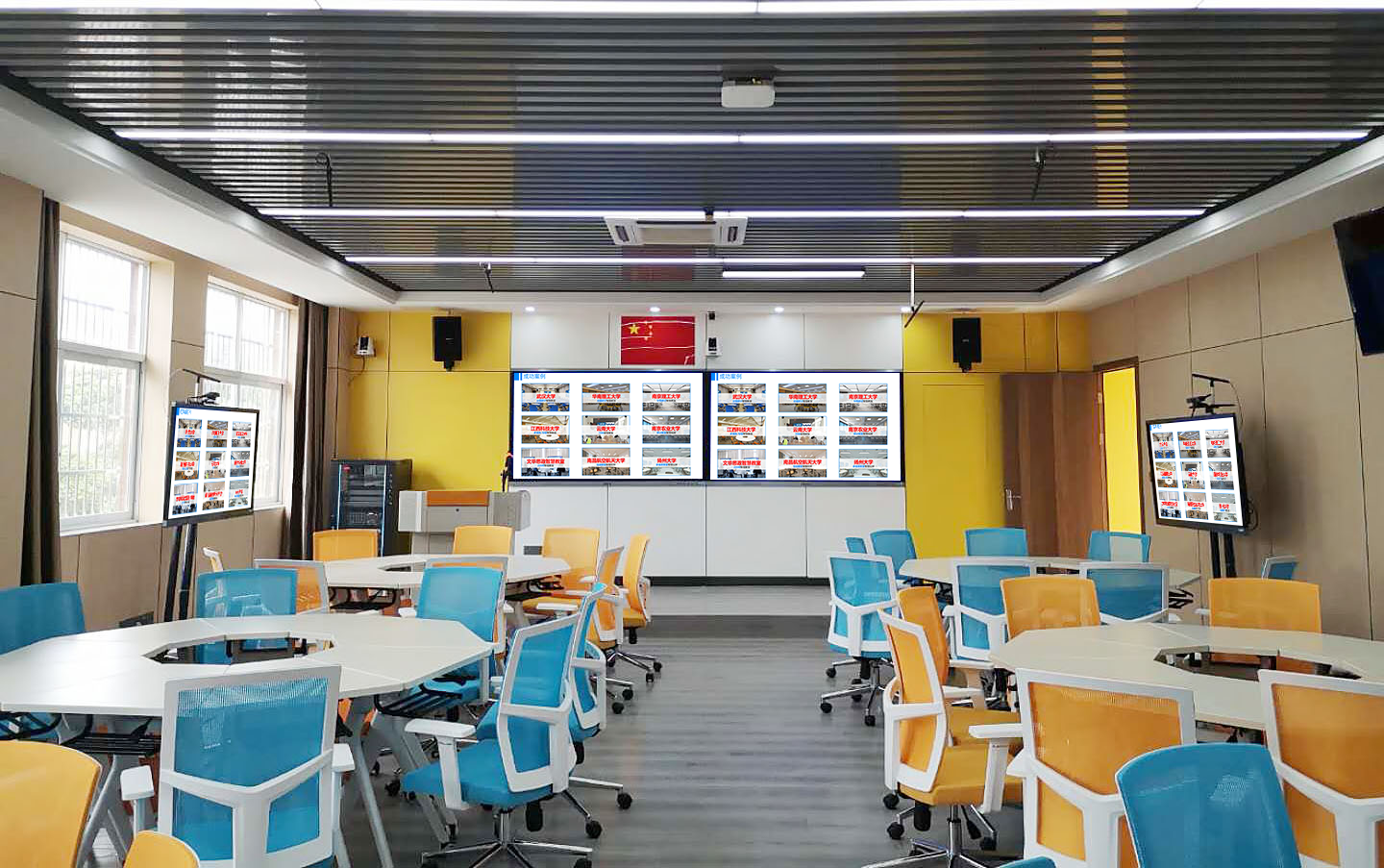Bijie Smart Classroom Solution: Reconstructing the Classroom with Technology, Making Teaching More Than Just ‘Teaching’
As education enters a deep digital watershed, ‘smart classrooms’ are no longer just simple combinations of ‘screens + projectors,’ but intelligent ecosystems that can truly activate classroom interaction and enhance teaching efficiency. Bijie has been deeply engaged in wireless screen casting and multimedia collaboration technology for over a decade, and its smart classroom solutions focus on ‘invisible connection, full-scene interaction, and lightweight management.’ This allows teachers and students to be liberated from device operations and concentrate on knowledge transmission and thought collision.
I. Full Device Compatibility, Allowing Teaching Resources to Be ‘Used and Projected at Will’
The core pain point of smart classrooms is often ‘multiple devices, difficult connections’—teachers’ laptops, students’ tablets, and teaching materials stored on phones are always trapped by cables or system barriers. Bijie’s proprietary BJCast protocol, compatible with mainstream screen casting protocols such as AirPlay, Miracast, and HUAWEI Cast+, achieves ‘full device wireless direct connection’:
– Teachers use their Windows computers to open courseware and press ‘Win+K’ to instantly project it onto the classroom main screen, where formulas and chart details can be enlarged three times without losing clarity;
– Students complete mind maps on iPads without the need to convert formats, directly projecting them onto group screens for sharing, allowing the whole class to annotate and discuss in real time;
– Even old projectors can become intelligent receivers after being connected to a Bijie screen casting box, avoiding the cost pressure of schools repeating equipment purchases.
Scene Direct Hit: In a high school physics class, the teacher projects an experimental video on circuit diagrams, and when a student discovers a step question, they immediately take a photo of their experimental setup and project it for comparison. The teacher and students jointly troubleshoot the issue, increasing the efficiency of classroom interaction by 60%.
II. Multi-Screen Collaboration, Moving Classrooms From ‘One-Way Inoculation’ to ‘Full Participation’
The traditional ‘monopoly of the main screen’ in classrooms easily turns students into passive recipients. Bijie’s smart classroom solution creates a ‘distributed interactive space’ through ‘main screen + group screen’ networking:
– Main screen broadcasting: Teachers sync key content to all group screens with one click, ensuring everyone focuses on core knowledge points;
– Group screen projection: Each group’s discussion results can be independently projected onto their own screen, which the teacher switches to view through the control center for targeted comments;
– Reverse control collaboration: The teacher can directly annotate student homework projections on the classroom main screen or remotely control student devices to flip pages, avoiding frequent walking around to interrupt thoughts.
Data Evidence: After deployment at a certain university, the number of student speeches during group discussions increased by 2.3 times, and the retention rate of knowledge after class rose from 58% to 82%.
III. Lightweight Management, Moving Operations and Maintenance From ‘Specialist Monitoring’ to ‘Remote Control’
With many devices spread across the campus, traditional operation and maintenance modes often lead to more problems than they solve. Bijie’s Web-based centralized management platform allows IT administrators to manage all campus devices from their offices:
– Real-time viewing of online status and network stability of each classroom projector, automatic alarms for abnormal situations;
– Unified push of firmware updates and setting of screen casting permissions (such as prohibiting students from self-projecting), avoiding debugging each classroom individually;
– Integration with the school’s central control system to achieve ‘one-click dismissal’—automatically closing screen casting and cutting off device power, saving energy and effort.
Customer Feedback: After deployment at a certain K12 school, the response time for equipment failures was reduced from 2 hours to 15 minutes, and the workload for IT personnel decreased by 70%.
IV. Comprehensive Coverage of Scenarios, Adapting from Routine Classes to Characteristic Teaching
Bijie’s smart classroom solution does not adopt a ‘one-size-fits-all’ approach but customizes solutions for different teaching scenarios:
– Regular classrooms: Focusing on ‘low-cost transformation,’ a single projector box plus existing display devices can achieve wireless screen casting and interactive annotations, suitable for daily teaching in primary and secondary schools;
– Staged classrooms/lecture halls: Support simultaneous projection of up to 6 devices, allowing PPTs and videos of the speaker and guest to be compared on separate screens, suitable for large public lectures and presentations;
– Group discussion rooms: Combined with Bijie’s multimedia collaboration system, group screens and the main screen are linked in real time, adapting to college seminars and project-based learning, making every student a protagonist in the classroom.
From the traditional model of ‘teacher lecturing, students listening’ to the smart classroom where ‘everyone can share, interact anytime,’ Bijie uses technology to break down the limitations of devices and spaces, returning teaching to its essence. Currently, Bijie’s smart classroom solution has served over 2,000 schools nationwide, covering all levels of education from basic to higher. Choose Bijie, and let every classroom become fertile soil for knowledge growth.